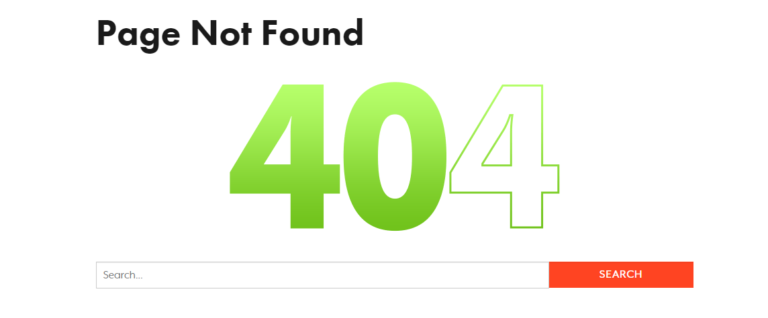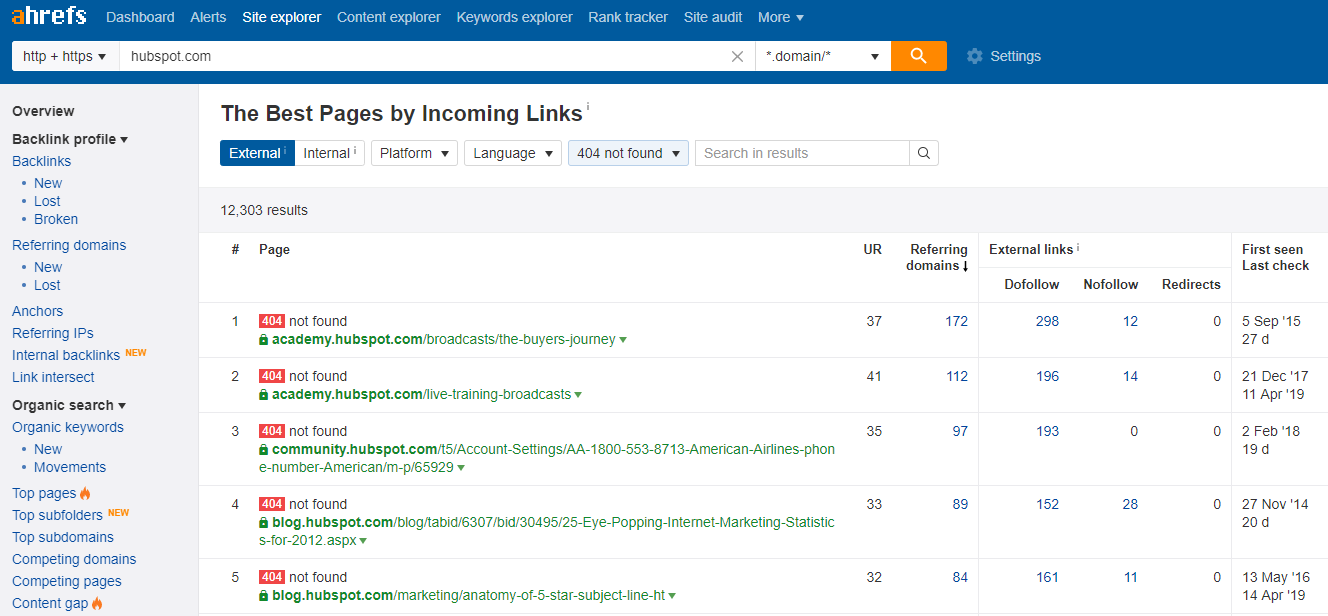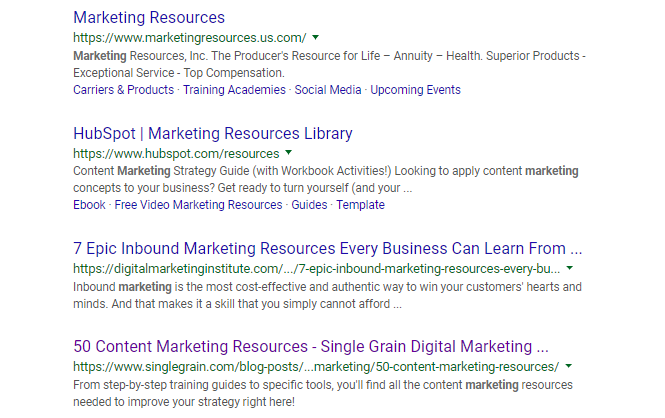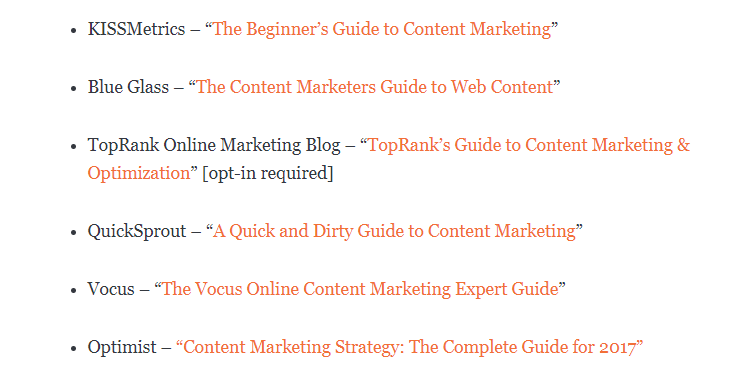What You Need to Know to Get Links
Link building tactics have a tendency to go in and out of style.
Broken link building is one such tactic.
It was once a convenient, scalable tool in a link builder’s toolbox. But then folks started saying it wasn’t as effective as guest posting (which, you know, is supposed to be dead in its own right).
The reality, of course, is somewhere in the middle.
A modern, comprehensive link building strategy requires a variety of different tactics to achieve your goals.
When used appropriately, broken link building still rocks. It’s scalable, reliable, and should be a staple you turn to when you need to put together a link building strategy.
Time has changed how an SEO should go about building broken links, though.
Here’s what you need to know to successfully build broken links today.
What Are Broken Links?
A broken link is a link on a website that no longer leads to the content that it’s supposed to be referencing. Instead, you get one of these big, unpleasant 404 graphics:

A broken link can happen in a myriad of ways. The website might have made a mistake when linking to outside content, for example, or the linked website has removed the page in question.
The big issue with this is that broken links hinder the user experience for anyone browsing your website. In fact, too many broken links can even hinder the linking site’s SEO.
That is where broken link building comes into play.
With any sort of link building, an SEO has to ask themselves this question:
Why is this site better off by including the link that I’m asking for?
When it comes to broken link building, that question is extremely easy to answer.
By pointing out a broken link to a webmaster, and offering a convenient replacement, you’re providing value. You’re helping the webmaster improve their site quality and making their lives easier.
In theory, at least.
The circumstance mentioned above is fairly idyllic. And, to be fair, if you’re dealing with a new webmaster or one servicing a website that doesn’t generate a massive amount of traffic, it might actually be that easy.
However, the vast majority of webmasters see requests like this all the time. They know the game that’s being played.
And that means broken link building is harder than ever before.
How to Find Relevant Broken Links
Luckily, the process of finding broken links isn’t all that hard.
In fact, it’s one of the reasons so many people tout broken link building for its scalability. There are a variety of different ways to look for broken links.
The most straightforward method would be to start by running backlink checks on websites and competitors in your niche.
Let’s look at HubSpot.com as an example.
HubSpot is an awesome resource for marketing information – but more importantly, they’re also a popular website that will give you an idea of how broken links can be found.

Using Ahrefs as our broken link checker, we can look at every 404 that currently exists on HubSpot. And not only that, a tool like Ahrefs provides information on which pages are currently linking to these broken pages.
If you’re running a marketing website and had a piece on the buyer’s journey, for example, you now have 172 leads to go after broken links.
The fun doesn’t stop there, either. It’s a pretty good bet that those 172 sites care about marketing, right? So you can also check to see if they have any broken links that you could pursue as well.
See why this strategy is so great for scaling?
There’s another conventional method for finding broken links: scraping resource pages. With this method, an SEO uses advanced search terms in Google or another search engine to find resource pages relevant to their niche.
So what does that look like in practice?
Let’s say you’re trying to promote a marketing website. You would type things like this into Google:
- marketing intitle:resources
- online marketing inurl:links
- online marketing blogs inurl:resources
From there, you pursue the SERP results that look promising, and manually check that all the resources they list have working links.
If you come across a broken link, toss it into Ahrefs or a similar tool to see who else might be linking to the broken page.
Here’s what finding broken links looks like in action. If we enter “marketing intitle:resources” into Google, we get the following SERP:

That “50 Content Marketing Resources” link looks promising; there has to be a decent chance that one of their links no longer works, right?

Clicking on this we found that the Blue Glass one is broken:

Checked Ahrefs: 12 referring domains, including a really nice link from Moz.
The Key to Converting Broken Links Into Wins
Finding these links is easy, nowadays. There are plenty of backlink tools that can show you which websites are referring to broken pages. To name a few:
- Ahrefs’ Site Explorer.
- Screaming Frog.
- Moz’s Link Explorer.
But now we’ve reached the hard part – asking a webmaster to replace a broken link with one to your own website.
Outreach is difficult, no matter what link building strategy you’re using. However, that’s actually one of the advantages of broken link building.
In theory, helping a webmaster to identify broken links and fix them is something that could help you to establish a working relationship.
By being helpful and sincere, they might be more willing to help you out and add your link.
In reality? Oftentimes, link builders take the scalability of broken link building a bit too far. They’ll send out emails that look like this:
Hello [webmaster],
My name is ___ and I’m an avid fan of your website [insert URL here]. However, I came across a broken link today that I thought you might like to know about. The link is in this post [insert page here] and here’s the anchor text in question.
I actually have a similar guide you could use if you wanted to replace the link. Here’s the link to my version: [insert your own link here]
Thank you!
Link Builder
Now, is that necessarily bad? No.
The main advantage of this email is that you can use it as a template and really speed up the process of your outreach. It even includes some spots where you can customize the email to suit the webmaster you’re reaching out to.
The problem, however, is that webmasters get requests like this all the time, especially if you’re trying to reach out to a popular blog or website.
If they’ve seen this tactic before, they know the game. They know you’re in it for a link and not their website’s success. And so the success rate of these templates falls dramatically.
So what should you do?
- Contact the right individual: An [email protected] or [email protected] email isn’t going to cut it if you want to earn a link. Do the research to find the proper contact.
- Build a rapport: Focus on building a rapport with the webmaster rather than immediately asking for a link. In fact, you could use the first email to introduce yourself and to talk about their website. Building that relationship and learning about the webmaster will give you a much more beneficial relationship and increase the chances of earning a link.
- Keep things simple: No one likes long emails. Not one person. And it’s easy as a link builder to feel as if you have to sell the person you’re contacting on providing a link, but honesty will get you much further. Take the following subject line as an example: “I found a broken link on your site.” It’s straightforward, easy to understand, and doesn’t require too much back-and-forth. You’ve got a much better chance of getting a reply with this than a subject line that gets too creative.
- Give value and show appreciation: If you’ve reached the point where a webmaster is responding positively to you, return the favor. Let them know how much you appreciate their efforts and do whatever you can to make it worth their time.
- Go the extra mile: This is especially helpful if you’re reaching out to webmasters who get a lot of web traffic. Go the extra mile by learning more about them before you first contact them. Do they have social media pages? Do you have common interests? These can be great conversation starters and get the ball rolling in the right direction.
It’s easy to start thinking too clinically with outreach, as if you’re attempting to make a transaction. But that’s just not a winning formula for link building.
Strive to be affable and easy to work with, while also providing webmasters with a reason to work with you.
Final Tips to Win Broken Links
Broken link building is still a fantastic tool for earning meaningful links.
In fact, it even has significant advantages over link building staples like guest posting. And as long as you use it in the correct manner, you will see results.
Don’t assume that simply having a replacement resource will be enough, though.
Webmasters get emails and pitches all the time; for you to stand out in their inbox, you need to communicate quickly, effectively, and give them a reason to work with you.
The best way to do that is to lean into your own personality to make your emails friendly, helpful, and approachable.
The longer you work at it, the more you’ll improve. All forms of link building take some trial and error.
The nice thing about it though is that you can track what emails work the best. Over time, you can change your style to generate even more wins.
Summary
Timeframe: Monthly
Results detected: 4-12 months
Average links sent per month: 6
Tools needed:
- Ahrefs
- Moz Link Explorer
- Majestic
- Google Serps
Benefits of broken link building:
- Broken link building provides you with a solid strategy to get quick wins for links from relevant webpages that had been linking to content that is no longer active on competing websites. As long as you have a great piece of relevant content, webmasters are incentivized to switch out the dead links because they won’t want dead links on their webpages.
- Broken link building increases your SEO authority by obtaining links for your website from highly relevant webpages. Often times, if it was a popular resource page that has now gone dead, you will be able to pick up several high authority links for your piece of content.
Image Credits
Featured Image: Paulo Bobita
All screenshots taken by author, May 2019
